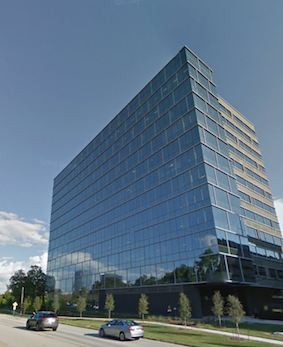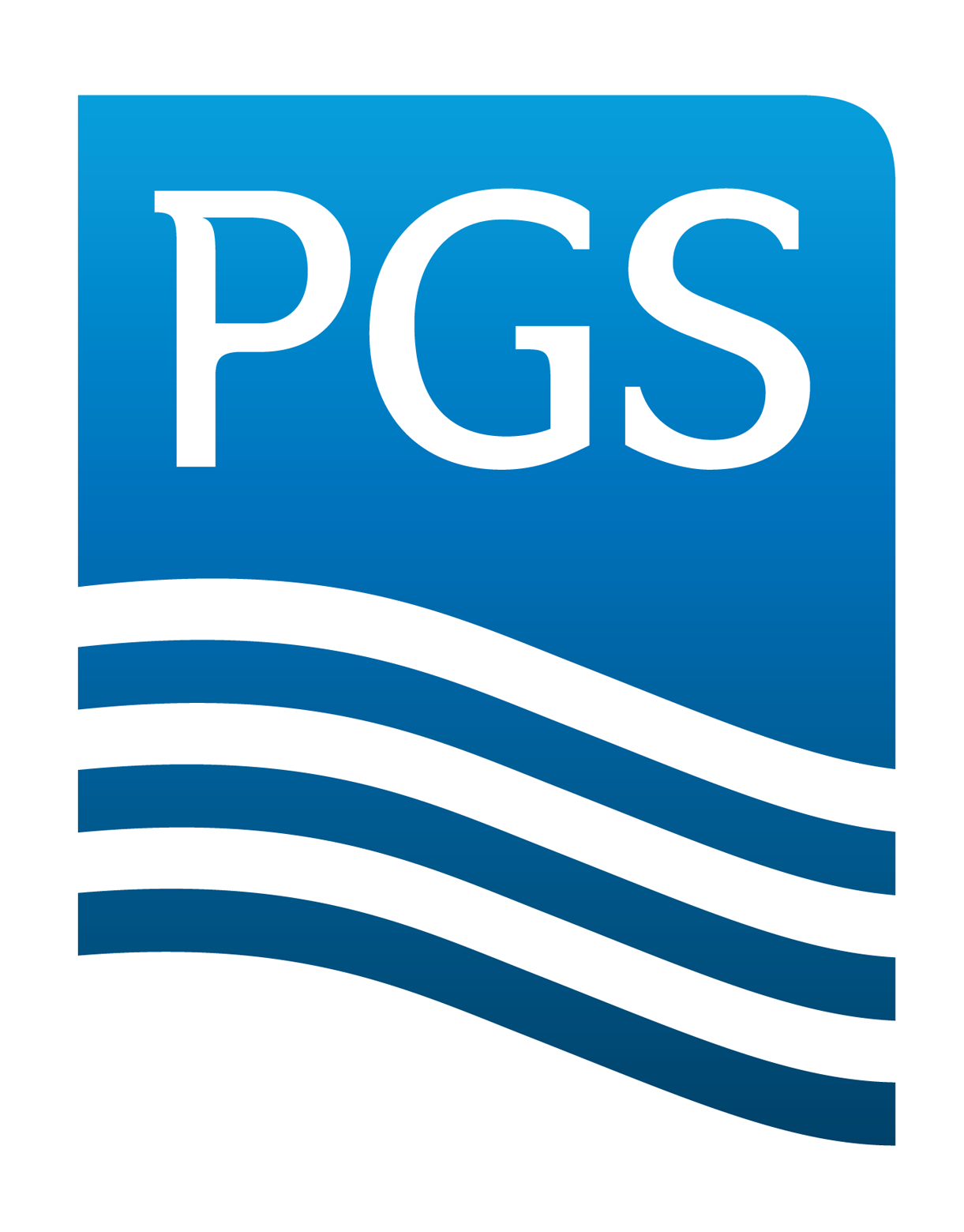SINBAD Consortium Meeting - Fall 2016
Date:
Oct 25-26, 2016 (Tues-Wed)
Venue:
PGS
15375 Memorial Drive, Houston, Texas 77079
Hotels:
Wyndham Houston West Energy Corridor
14703 Park Row, Houston 77079 (+1) 281-558-5580 $125/nt*
*please contact us to receive rate
Contact SINBAD Consortium:
Felix Herrmann, Director
fherrmann@eos.ubc.ca
Miranda Joyce, Coordinator
mjoyce@eos.ubc.ca (+1) 604-822-5674
Download Bundled Slides HERE
(Sponsor login and password required, plse contact hmodzelewski@eos.ubc.ca)
Program handout can be downloaded HERE (password not required)
 |
 |
Schedule of Events:
| Date | Time | Event |
|---|---|---|
| Mon Oct 24 | 5:30 PM - 6:30 PM | Mixer Christian's Tailgate 1010 Hwy 6 N |
| Tues Oct 25 | 8:30 AM - 5:00 PM | Technical Sessions PGS 15375 Memorial Drive |
| Wed Oct 26 | 8:30 AM - 5:00 PM | Technical Sessions PGS 15375 Memorial Drive |
| 6:30 PM | Dinner Caracol 2200 Post Oak Blvd |
Hosted By
SINBAD Supporting Companies
BG Group
Chevron
ConocoPhillips
DownUnder GeoSolutions
Hess
Petrobras
PGS
Schlumberger
Sub Salt Solutions
Woodside
Participants from Supporting Companies:
Aria Abubakar (Schlumberger)
Peeter Akerberg (Chevron)
Vanessa Brown (Chevron
Jun Cao (ConocoPhillips)
Nizar Chemingui (PGS)
Xin Cheng (Schlumberger)
Richard Coates (Schlumberger)
Thomas Cullison (Hess)
Richard Dyer (PGS)
Gary Hampson (DUG)
Jianxing Hu (ConocoPhillips)
Amarjeet Kumar (DUG)
Cintia Lapilli (Schlumberger)
Paul Lecocq (PGS)
Chengbo Li (ConocoPhillips)
Jianchao Li (ConocoPhillips)
Xiang Li (PGS)
Tim Lin (Sub Salt Solutions)
Faqi Liu (Hess)
Shaoping Lu (PGS)
Nick Moldoveanu (Schlumberger)
Scott Morton (Hess)
Truong Nguyen (PGS)
Alba Ordonez (PGS)
Jae Young Park (Chevron)
Lingyun Qiu (PGS)
Jaime Ramos (PGS)
Anandaroop Ray (Chevron)
Anusha Sekar (Chevron)
Theodore Stieglitz (Hess)
Dong Sun (Schlumberger)
Sergey Terentyev (Hess)
Troy Thompson (DUG)
Yue Tian (Chevron)
Alejandro Valenciano (PGS)
Yongzhong Wang (DUG)
John Washbourne (Chevron)
Dan Whitmore (PGS)
Zhen Xu (Schlumberger)
Yu Zhang (ConocoPhillips)
Guests:
Raymond Abma (BP)
Francois Audebert (Total)
Leonardo Borges (Intel)
Joe Dellinger (BP)
Russell Hewett (Total)
Mingqiu Luo (SINOPEC)
Rami Nammour (Total)
Binh Nguyen (BP)
Paul Williamson (Total)
Zhou Yu (BP)
Participants from SLIM:
Ben Bougher (MSc, SLIM)
Curt Da Silva (PhD, SLIM - Math Dept)
Emmanouil Daskalakis (PDF, SLIM)
Zhilong Fang (PhD, SLIM)
Gerard Gorman (Imperial College London)
Felix J. Herrmann (Director, SLIM)
Miranda Joyce (Staff, SLIM)
Rajiv Kumar (PhD, SLIM)
Mathias Louboutin (PhD, SLIM)
Felix Oghenekohwo (PhD, SLIM)
Bas Peters (PhD, SLIM)
Shashin Sharan (PhD, SLIM)
Rongrong Wang (PDF, SLIM - Math Dept)
Haneet Wason (PhD, SLIM)
Philipp Witte (PhD, SLIM)
Mengmeng Yang (PhD, SLIM)
Download bundled slides — all talks — HERE
Download SINBAD program booklet (.pdf) password not required
Tuesday October 25, Houston, PGS, 15375 Memorial Drive
2016 SINBAD Consortium meeting
Wednesday October 26, Houston, PGS, 15375 Memorial Drive
Extreme-scale optimization w/ constraints
Because of its scale and particular structure, inversion technologies in exploration seismology that either involve massive data volumes or solutions of wave equations call for the development of specialized extreme-scale optimization techniques that find the sweet spot between speed, storage, cycles, IO, simplicity and ability to incorporate prior information flexibly.
Composite convex smooth optimization with seismic data processing applications
Curt Da Silva (fifth year PhD)
Abstract. In this work, we show a general technique for solving optimization problems that are comprised of minimizing a composition of a convex, non-smooth function with a smooth function. We demonstrate this technique in the seismic data processing context applied to robust missing trace interpolation in the low-rank Hierarchical Tucker tensor format as well as cosparsity-based missing trace interpolation.
Low-rank matrix recovery for parallel architectures
Oscar Lopez (third year PhD)
Abstract. Low-rank matrix recovery (LRMR) techniques offer potential tools for frugal seismic data acquisition, where dense acquisition is replaced by large-scale optimization. This shift of focus means that efficient numerical methods are critical for successful LRMR implementation in seismic applications.
In this talk, we extend the rank-penalization methodology to a parallelizable framework. We adopt a factorization-based alternating minimization scheme and decouple it into an independent system of simpler sub-problems that can be handled in parallel. The methodology is flexible, where the approach can be adapted to the number of workers available. Numerical experiments are conducted to demonstrate that the quality of reconstruction is comparable to existing methods at a fraction of the computational time.
Time-domain sparsity-promoting least-squares migration with source estimation
Mengmeng Yang (third year PhD)
Abstract. Compared to traditional reverse-time migration (RTM), least-squares RTM (LS_RTM) is able to obtain true amplitude images as solutions of \(\ell_2\)-norm minimization problems by fitting the synthetic and observed reflection data. The shortcoming is that solutions of these \(\ell_2\) problems tend to be overfitted and computationally too expensive. By working with randomized subsets of data only, the computational costs of LS-RTM can be brought down to an acceptable level, producing artifact-free high-resolution images. By including on-the-fly source-time function estimation into the method of Linearized Bregman (LB), we tackle the open issues of these “compressive imaging” in the aspects of algorithmic complexity of solver, guaranteed convergence and source estimation. We also inbvestigate whether the algorithm can be accelerated when we combine LB with the Nesterov method. Application of our algorithm on a 2D synthetic shows that we are able to get high-resolution images, with accurate estimates of the wavelet, for one single data pass.
Time-domain least-squares RTM with sparsity promotion on field data
[Philipp Witte] (third year PhD)
Abstract Least squares reverse time migration (LSRTM) is an inversion based imaging algorithm which can surpress acquisition related artifacts and provides images with increased frequency content, decreased noise level and balanced amplitudes. In this work demonstrate our time-domain LSRTM workflow using various pre-conditioners, source-subsampling and sparsity promotion and show its application to the 2D Machar field data set.
Constraints versus penalties for edge-preserving full-waveform inversion
Abstract. Full-waveform inversion is challenging in complex geological areas. Even when provided with an accurate starting model, the inversion algorithms often struggle to update the velocity model. Contrary to other areas in applied geophysics, including prior information in full-waveform inversion is still relatively in its infancy. In part this is due to the fact that incorporating prior information that relates to geological settings where strong discontinuities in the velocity model dominate is difficult, because these settings call for non-smooth regularizations. We tackle this problem by including constraints on the spatial variations and value ranges of the inverted velocities, as opposed to adding penalties to the objective as is more customary in main stream geophysical inversion. By demonstrating the lack of predictability of edge-preserving inversion when the regularization is in the form of an added penalty term, we advocate the inclusion of constraints instead. Our examples show that the latter lead to more predictable results and to significant improvements in the delineation of Salt bodies.
This is joint work with Bas Peters.
Convex & non-convex constraint sets for full-waveform inversion
Bas Peters (4th year PhD)
Abstract. We extend some of our previous work on constrained formulations of full-waveform inversion. Some motivating examples illustrate why solving constrained problems directly is a simpler approach for solving non-linear inverse problems than penalized problem formulations. So far we used constraints which can be represented as convex sets, for which most optimization theory is developed. Some non-convex counterparts of convex sets are introduced and examples show that the algorithms developed for convex sets also work well with non-convex sets. The motivation to also explore non-convex sets, is that they sometimes translate prior geological knowledge into mathematical constraints in a more direct way.
All presented material is available as a user-friendly toolbox. The toolbox works with any code which can provide a data-misfit function value and a gradient direction.
Computational aspects of wave-equation based inversions
Full-waveform inversion (FWI), reverse-time migration, wave-equation migration velocity analyses, wave-equation based source localization all depend on fast and versatile implementations of wave-equation solvers both in the frequency and in the time domain. During this session, we will present our unified matrix-free scalable software environment for 2–, 2.5–, and 3–D acoustic time-harmonic full-waveform inversion. We will also present results from our collaboration with Chris Stolk (University of Amsterdam) on minimizing phase velocity errors, and with Gerard Gorman (PI of opesci) from Imperial College London with who we developed a automatic stencil-based code generation utility (devito) for acoustic, VTI, and TTI 3D wave equations that outperforms state-of-the-art industry implementations. We conclude by illustrating how we incorporate these propagators into FWI and RTWM workflows in Julia.
A unified 2D/3D software environment for large scale time-harmonic full waveform inversion
Curt Da Silva (fifth year PhD)
Abstract. Full Waveform Inversion is a costly and complex procedure, resulting in industrial codebases that are often written entirely in low-level languages, making them hard to understand, maintain, improve, and extend. In this work, we propose a software framework for organizing a 3D FWI environment that helps mitigate design complexities inherent in the problem in a straightforward way while delegating the performance-critical portions to low level languages to maintain efficiency. The result is a software framework that has a unified interface for 2D and 3D and is flexible, efficient, scalable, and demonstrably correct. We demonstrate the effectiveness of this approach on a large scale 3D FWI example.
Phase velocity error minimizing scheme for the anisotropic pure P-wave equation
Philipp A. Witte (third year PhD), Christiaan C. Stolk (University of Amsterdam)
Abstract Pure P-wave equations for acoustic modeling in transverse isotropic media are derived by approximating the exact pure P-wave dispersion relation. In this work, we present an alternative to the common Taylor expansion based equations, in which we approximate the exact dispersion relation through a polynomial expansion and determine its coefficients by solving a least squares problem that minimizes the phase velocity error over the complete range of phase angles. We show that this approach is up to an order of magnitude more accurate than other pure P-wave equations at a comparable computational cost.
Open Performance portablE SeismiC Imaging —OPESCI
Gerard Gorman (Reader, Imperial College)
Abstract. In this project, we introduce OPESCI-FD, a Python package built on symbolic mathematics to automatically generate Finite Difference models from a high-level description of the model equations. We investigate applying this framework to generate the propagator program used in seismic imaging. We implement the 3D acoustic and anisotropic FD scheme as an example and demonstrate the advantages of usability, flexibility and accuracy of the framework. The design of OPESCI-FD aims to allow rapid development, analysis and optimisation of Finite Difference programs. OPESCI-FD is the foundation for continuing development by the OPESCI project team, building on the research presented in this report. This talk concludes by reviewing the further developments that are already under way, as well as the scope for extension to cater for other equations and numerical schemes.
This joint work with SINBAD and SENAI CIMATEC and has received additional funding from Intel.
High-performance seismic applications of OPESCI
Mathias Louboutin (third year PhD)
Abstract. We present our latest geophysical applications built on OPESCI. By using a high-level symbolic API, we allow for fast development and easy implementation of various (acoustic, VT, TTI) wave propagators relevant to exploration geophysics. We start by highlighting possibilities in an acoustic setting including classical operators such as forward modelling and linearised forward (Born) modelling as well as more advanced operators deriving from wave equations with double dipoles and the application of the PDE to a wavefield instead of applying its inverse. We will also show that the performance (time to solution) of this code is on par with industrial software libraries (10% faster on the full SEAM model). We finally present our implementation of 3D TTI modelling and its adjoint including out comprehensive testing framework.
This is joint work with Gerard Gorman.
A large-scale time-domain modeling and inversion workflow in Julia
Philipp A. Witte (third year PhD)
Abstract We present our initial steps towards the development of a large-scale seismic modeling workflow in Julia which provides a framework for wave-equation based inversion methods like full waveform inversion or least squares migration. Our framework is based on the Devito tool for optimized finite difference computations that generates highly optimized code from symbolic PDEs. We aim at developing a flexible workflow which is based on abstract operators and allows coding that is “close to the math”, while at the same time relying on extremely fast and efficient, state of the art wave equation solvers.
Novel wave-equation based inversion technologies
In this session, we leverage recent insights from machine learning, data analytics, and compressive sensing towards new approaches “old problems” including amplitude-versus-offset inversion and source collocation with application to micro-source localization.
Amplitude vs. angle analysis as an unsupervised learning problem
Ben Bougher (MSc — graduated)
Abstract. Amplitude vs. angle analysis (AVA) of pre-stack seismic data is a commonly used method for inferring petrophysical information from seismic data. Conventionally, a two-term linearized rock physics model (Shuey equation) is used to invert angle-domain common-image gathers. Multivariate analysis of the inverted terms leads to a background of siliciclastic interfaces, where outlying points are associated with hydrocarbon saturated sands.
The acquisition and processing of seismic data does not result in highly-calibrated measurements that adhere to the rock physics model, which often inhibits the success of AVA analysis. We offer an alternative approach that uses PCA-based methods to learn projections directly from the data without the need of a physical model. Results on synthetic and field data show that PCA-based projections can improve segmentation of potential reservoirs in seismic data.
High resolution microseismic source collocation
Shashin Sharan (third year PhD)
Abstract. Microseismic waves generated by hydraulic fracturing are used to locate the fractures created in the reservoir. Most of the existing source collocation methods have their limitations in terms of resolution of very closely spaced microseismic events. In this work we propose a method to collocate microseismic events with high resolution along with simultaneous estimation of source time function. In the context of waves, the finite-difference modelling operator acts as an analysis operator for wavefields. This implies that wavefields under the action of a finite-difference modelling kernel can be focused to sources generating these wavefields. We exploit this property of wavefields to locate microseismic events and estimate the source time function jointly. To arrive at a computational feasible scheme, we use the accelerated version of Linearized Bregman (LBR) algorithm to solve the above mentioned problem.
This is joint work with Rongrong Wang.
Efficient approach for quantifying uncertainty of wavefield reconstruction inversion
Zhilong Fang (fourth year PhD)
Abstract Due to the noisy measurements, sparse observations, uncertain forward models, and uncertain prior parameter information, significant uncertainty arises in the inverted velocity model of full-waveform inversion. The uncertain velocity model leads to the uncertainty in the correct positions of events in the migrated images, which subsequently influences the important decision-makings in the oil and gas exploration and production (E&P) business such as the drilling decisions and economic evaluations. Therefore, understanding the uncertainty in the inverted velocity model is essential for the mitigation of the E&P risks. A common approach to accounting for uncertainty in seismic inverse problems like full-waveform inversion is to describe the unknown parameters in probabilistic by the Bayesian inference. The Bayesian inference aims at incorporating the information from the data, physics, and one’s prior knowledge to formulate a posterior distribution function to characterize the statistical properties of the unknown parameters. However, characterizing uncertainties for the large-scale full-waveform inversion in seismic exploration is prohibitively expensive since it requires thousands of function evaluations to sample the parameter space (e.g. via Markov chain Monte Carlo sampling). Apart from this, the existing methods of uncertainty quantification for full-waveform inversion is through applying the Bayesian inference to the standard method such as the adjoint-state method with the assumption that no uncertainty arises from the wave-equation. However, the wave-equation may not be able to reflect all the physics, hence, incorporating uncertainty from wave-equation might benefit the quantification of uncertainty. In this work, we propose to perform uncertainty quantification using the recently proposed wavefield reconstruction inversion technique, which gives an appropriate framework to tackle the uncertainty in wave-equation solve by adding the misfit of the wave-equation to the likelihood distribution and relaxing the wave-equation constraint. Moreover, we propose a computationally feasible approach to analyzing the posterior distribution of the wavefield reconstruction inversion method, which incorporates a Gaussian distribution that approximates the posterior distribution with an optimization-driven Gaussian simulator to sample the Gaussian distribution efficiently. Numerical examples show that comparing to the McMC method, our approach is able to produce comparable results with less computational cost.
This is joint work with Curt da Silva and [Rachel Kuske].
Low-rank methods for on-the-fly slicing & dicing of seismic data & image volumes
Abstract. Conventional oil and gas fields are increasingly difficult to explore and produce, which calls for more complex wave-equation based inversion (WEI) algorithms that require dense long-offset samplings. These requirements result in an exponential growth in data volumes and prohibitive demands on computational resources. In this work, we propose a fast, resilient, and scalable wave-equation based inversion methodology for both the data and image-domain, which can handle complicated wave physics. First we show that both the data and image domains exhibit low-rank structure in a transform-domain, which can be exploited to compress the dense data or image volumes. Then, by accessing information from the compressed volumes on-the fly, we devise a scalable computational inversion framework driven by gradient calculations, which works with small subsets of source experiments. In the full-waveform inversion context, we demonstrate the efficacy of low-rank interpolation to improve downstream inversion results compared to merely inverting the velocity model using the subsampled data volume directly. We demonstrate the effectiveness of the proposed framework on two different waveform-inversion formulations, specifically performing full-waveform inversion on 5D data set generated using the overthrust model, and wave-equation based migration velocity analysis on the Marmousi model.
This is joint work with Curt Da Silva and Yiming Zhang.
Cost-effective (time-lapse) seismic data acquisition & recovery
We present the latest on (i) the recovery of low-frequencies from the bandwidth-limited and noisy data using convex optimization techniques; (ii) the recovery of 3D seismic data volumes using computationally fast and memory efficient matrix completion techniques; (iii) asymmetric time-lapse acquisition building on our joint-recovery model; and (iv) simulation-based acquisition design for randomized 3D towed-marine time-lapse seismic acquisition.
Two methods for frequency down-extrapolation
Rongrong Wang (PDF)
Abstract. It is well known that low frequency data are essential to the success of the Full-Waveform Inversion. Field data from a usual marine acquisition, however, typically lack reliable low frequencies due to the existing physical limitations. One research direction focuses on studying low-frequency extrapolation, the process of extending reliable frequency bands of the raw data towards the lower end of the spectrum. We propose two optimization problems, by solving which low frequencies can be made out of the high SNR high frequency component. We present both theoretical explanation and numerical experiments to demonstrate the efficacy as well as limitation of these methods.
Efficient large-scale 5D seismic data acquisition and processing using rank-minimization
Rajiv Kumar (fifth year PhD)
Abstract Seismic data collection is becoming challenging because of increased demands for high-quality, long-offset and wide-azimuth data. Leveraging ideas from CS, in this work we establish a cost effective acquisition and processing techniques, which are no longer dominated by survey area size but by the sparsity of seismic data volumes. In the first part of abstract, we establish connections between random time dithering and jittered sampling in space. Specifically, we recover high-quality 5D seismic data volumes from time-jittered marine acquisition where the average inter-shot time is significantly reduced, leading to cheaper surveys due to fewer overlapping shots. The time-jittered acquisition, in conjunction with the shot separation by Singular-Value Decomposition (SVD)-free factorization based rank-minimization approach, allows us to recover high quality 5D seismic data volumes. Results are illustrated for simulations of simultaneous time-jittered continuous recording for a 3D ocean-bottom cable survey, where we outperforms existing techniques, by an order of magnitude computational speedup and using 1/20th of the memory, that use sparsity in transforms domains. The second part of abstract focussed on leveraging low-rank structure in seismic data to solve extremely large data recovery (interpolation) problems. We introduced a large–scale SVD-free optimization framework that is robust with respect to outliers and that uses information on the support. We test the efficacy of the proposed interpolation framework on a large-scale 5D seismic data, generated from the geologically complex synthetic 3D Compass velocity model, where 80% of the data has been removed. Our findings show that major computational and memory gains are possible compared to curvelet-based reconstruction.
Asymmetric sampling for time-lapse surveys
Felix Oghenekohwo and Haneet Wason
Abstract. In this talk, we use the joint recovery model (JRM), which derives from distributed compressed sensing, to reconstruct time-lapse data acquired via time-jittered marine sources that are significantly subsampled in the monitor survey(s) in comparison to the baseline survey, hence, saving acquisition cost. We analyze the effects of two or more asymmetrically subsampled monitor surveys on wavefield reconstruction via JRM. We leverage the common information shared amongst the vintages during our sparsity-promoting recovery.
Low-cost, randomized 3D towed-marine time-lapse seismic acquisition
Rajiv Kumar, Felix Oghenekohwo, Shashin Sharan, and Haneet Wason
Abstract. Most often conventional 3D towed-marine seismic data acquisition suffers from limited illumination of subsurface due to narrow azimuth. Although, acquisition techniques such as Ocean Bottom Cable (OBC), Ocean Bottom Node (OBN), Rich-Azimuth (RAZ) acquisition, Multi-Azimuth (MAZ) acquisition have been developed to illuminate the subsurface from all possible angles, these acquisition techniques are expensive. Motivated by the design principles of compressed sensing, we acquire randomly subsampled and simultaneous (e.g. simultaneous long offset) 3D towed-marine time-lapse seismic data for few (random) azimuths, and recover densely sampled multiple azimuth baseline and monitor data via sparsity promotion and rank minimization. Our acquisition is low cost since we have subsampled measurements.
Discussion
This time slot is designated to informal discussion, feedback & possible demos. It is important for us to get input on the application and possible use of our work and we therefore greatly value your input. We hope that this for will continue to be conducive to lively discussions.

